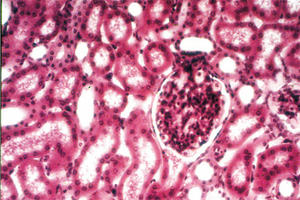All day, the body performs a series of activities in order to stay alive and healthy. But, at the same time, it constantly produces waste that must be eliminated. Otherwise, it upsets the body’s equilibrium and can cause the deterioration of tissues and organs.
There are a series of mechanisms that exist in order to carry out the mission of eliminating waste (excretion).
These include sweating (to dispose of some salts and minerals), expelling carbon dioxide through respiration, disposing of urine (micturition) and eliminating feces, a function controlled by the large intestine (defecation).
Urinary apparatus
It consists of the kidneys, bladder, ureters and the urethra. It is a true cleaning system, because it is in charge of filtering a number of substances found in the blood, as well as substances that are of no use to the body and so must be eliminated through urine.
The urinary apparatus also performs other tasks, like regulating the pH level of blood (the level of basicity or acidity of a substance), eliminating hydrogen ions (molecules secreted by acids) from the bloodstream, and assimilating bicarbonate ions, which are capable of balancing and countering acidity.
The kidneys are the most important organs in this apparatus. They are found at the bottom back of the abdomen, one on each side of the spine. They measure around 12 centimeters long and 7 centimeters wide; their girth is 3 to 5 centimeters and their weight fluctuates between 150 to 300 grams. Their main function is filtering blood and eliminating chemical waste generated by cellular activity.
These organs are coated in a layer of conjunctive tissue and a layer of fatty tissue. The former is known as the renal capsule and is attached to the surface of the kidney. The latter is called renal fascia or Gerota’s fascia, and besides containing the organ, it also covers the suprarenal glands (they are found at the top of the kidney and are part of the endocrine system) and perirenal fat.
In addition, within the kidney’s inner border we find the renal hilum, the entry and exit point of the renal veins and arteries and of the excretion ducts called ureters.








 Muere Evita
Muere Evita